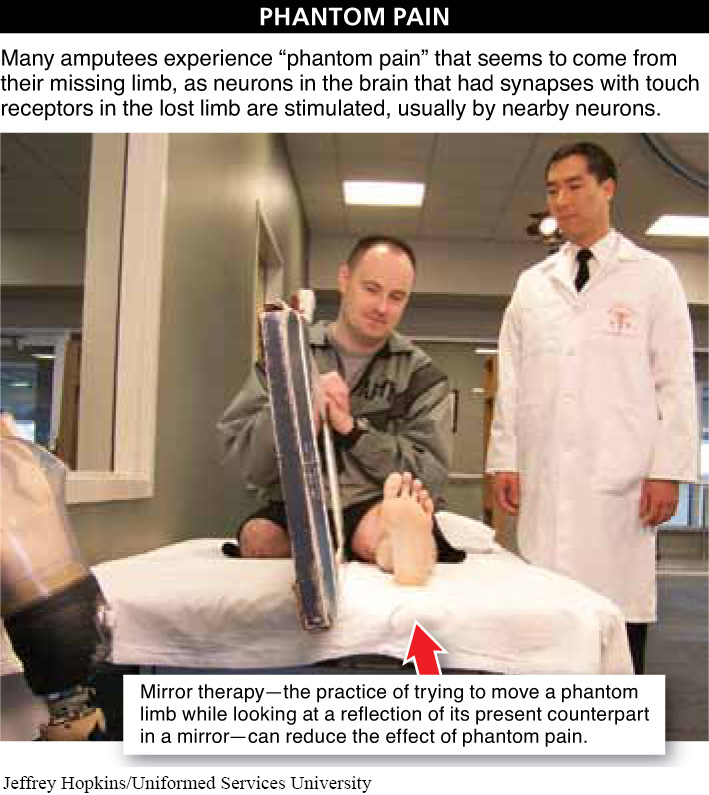The last of the traditional five senses in humans is touch. Touch is actually a class of sensations generated by numerous different types of sensory neurons that are sensitive to pressure (mechanoreceptors), temperature (thermoreceptors), or pain (pain receptors). These sensory receptors are located throughout the body, and are found in particularly dense concentrations in places such as the fingertips in primates and the side of the body (called the lateral line) in most types of fish.

941
Whether they are mechanoreceptors or pain receptors or thermoreceptors—
Pain-

Amputees sometimes feel real pain where their limb once was. How can this be?
Conversely, and eerily, most amputees report that they sometimes experience tingling, prickly sensations or even shooting pains that come from where their amputated limb once was. Called “phantom pain,” these sensations are very real and occur when neurons in the brain that used to receive information from touch receptors in the lost limb are firing, usually due to stimulation from other, nearby neurons (FIGURE 23-30).
TAKE-HOME MESSAGE 23.13
Touch is a class of sensations generated by mechanoreceptors, thermoreceptors, and pain receptors located throughout the body. Stimulation of these receptors causes a change in the shape of the sensory neuron’s membrane, altering its permeability, generating action potentials, and causing the perception of touch by the brain.
How does the drug morphine reduce pain?
Morphine blocks pain receptors, making them unable to respond to the stimulus that would ordinarily cause pain.
942